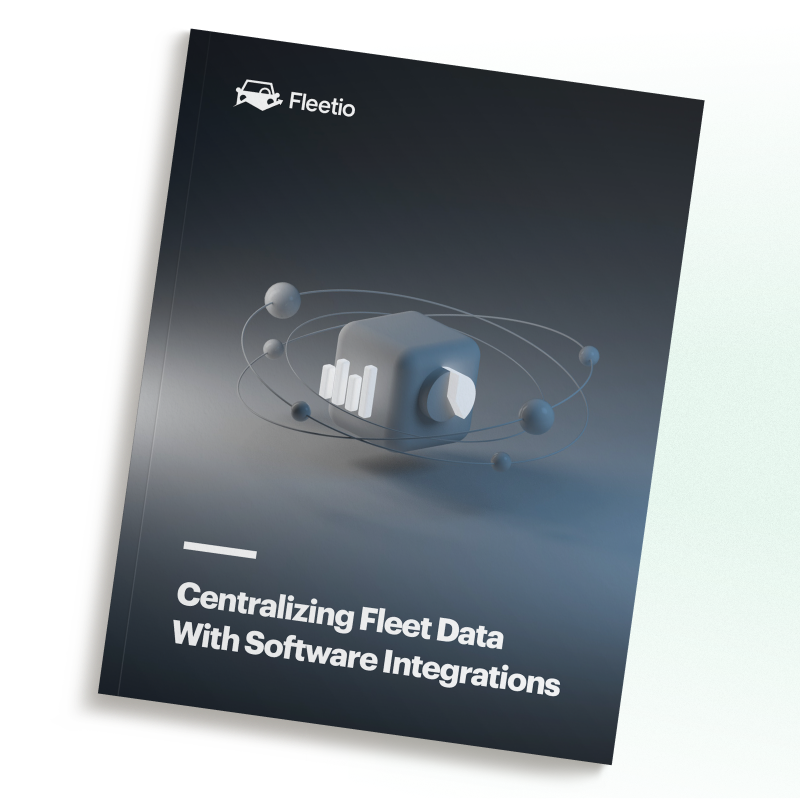4 Tips for Crafting Effective Driver Training Programs
Prioritizing fleet operator safety can have ripple effects throughout the organization, and a large part of safety is proper driver behavior. Building a driver training program to help improve behavior behind the wheel can be challenging, but when you leverage data-driven insights, the process becomes both manageable and highly impactful.
Nov 3, 2023
4 min read

One of the best ways for retaining drivers is to set them up for success. This includes tailored training and coaching for drivers who may be… we’ll say less-than-top performers.
Because training and coaching may seem more like a punishment to some individuals, it’s important to communicate that it is not a punishment, but an investment in the individual and their continued growth within the company.
Driver behavior-related data provides valuable insights into how fleet drivers perform on the road and covers various aspects, such as speeding and harsh acceleration, braking and cornering. Monitoring these behaviors allows fleet managers to distinguish between top-performing drivers and those with problematic behaviors.
The Role of Data in Tailored Training
Data forms the backbone of a tailored driver training program. By collecting and analyzing driver behavior-related data, fleets can identify areas where specific drivers may need improvement. Below are a few steps fleets can take to help create driver training programs.
1. Improve Data Collection
Utilize fleet solutions, like telematics, driver monitoring systems and fleet management software (FMS) for efficient data collection. Telematics typically include GPS tracking and onboard diagnostics, while driver monitoring systems lean toward dash cam use, though both can record instances of speeding, abrupt acceleration, harsh braking and more. Integrating these fleet solutions with FMS brings all your fleet data to a single dashboard, allowing for a more robust, comprehensive look into driver behavior, including how much poor behaviors are impacting cost, downtime and profitability.
2. Identify Behavior Patterns
Analyze the collected data to recognize patterns of undesirable or costly behavior. Some drivers may consistently exhibit aggressive driving habits, while others might have occasional lapses. This data-driven approach enables you to pinpoint areas for improvement.
3. Customize Training Programs
Customize training programs based on individual driver profiles. For example, if a driver frequently has hard braking incidents, focus the training on defensive driving and maintaining safe following distances. Make sure any training or coaching takes place during normal working hours (unless you plan to compensate employees for off-hours training) and accommodates driver schedules. Part of custom training can even include fleet driver certifications.
4. Solicit Feedback for Coaching
Use driver behavior data to provide personalized feedback to each driver and solicit them for feedback as well. Why are these behaviors happening? What is the core issue that needs to be addressed? Constructive feedback —constructive conversation — coupled with coaching, can be highly effective in improving driver behavior.
5. Set Goals
Set clear goals for drivers based on their behavior data. For example, if the driver has a history of speeding, work with them to establish speed limits that align with safety regulations or discuss route alternatives. Monitor their progress and provide positive reinforcement when they meet these goals.
Interconnected data
Fleetio’s integration feature allows fleets to combine business and fleet solutions onto a single platform so you can comprehensively track and manage operations with ease.
Learn morePractical Tips for Customized Driver Training
Crafting a training program based on driver behavior data requires a systematic approach. Below are some tips for achieving optimal results.
1. Transparency and Fairness
Ensure that the training program is transparent and fair. Managing fleet drivers should include making them aware of the data being collected and how it will be used to tailor their training. Address their concerns and emphasize that the goal is to improve safety and efficiency.
2. Feedback Mechanism
Establish a robust feedback mechanism. Regularly communicate with drivers about their performance, highlighting areas of success as well as areas that need improvement. Encourage an open dialogue where drivers can ask questions and seek clarification.
3. Continuous Improvement
Use driver behavior data to identify areas where additional training and development are necessary. This data-driven approach allows fleets to continuously refine their training programs. Consider periodic assessments when training drivers; track progress and adapt as needed.
4. Driver Engagement
Encourage drivers to actively participate in the training process. When drivers are engaged and invested in their own improvement, the results are often more substantial. Implement a rewards system to acknowledge and incentivize safe driving practices.
The Road to Improved Driver Behavior
For enhanced driver safety and increased asset efficiency, data-driven driver training programs are a game-changer. By harnessing driver behavior-related data and customizing training to address individual needs, fleets can significantly enhance driver safety, reduce accident risks and extend the useful life of their assets. Fleets are encouraged to adopt this proactive approach, and with the right data in hand, the journey toward improved driver behavior becomes not only achievable but also highly effective.
Keep up with the conversation
Fleetio fosters fleet-wide communication using in-app comments and @mentions so drivers, technicians and managers can collaborate efficiently.
Book custom demo
Senior Fleet Content Specialist
As a Senior Fleet Content Specialist at Fleetio, Rachael Plant uses her near decade of industry experience to craft practical content aimed at helping fleet professionals tackle everyday challenges with confidence.
LinkedIn|View articles by Rachael PlantReady to get started?
Join thousands of satisfied customers using Fleetio
Questions? Call us at 1-800-975-5304

